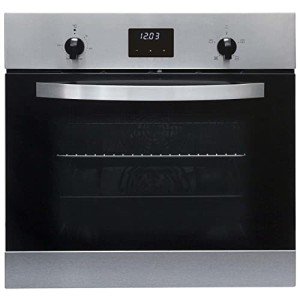5 Laws That Anyone Working In Oven And Hob Should Know
The Complete Guide to Ovens and Hobs: Choosing the Right Appliances for Your Kitchen
When it pertains to creating cooking masterpieces, the importance of quality kitchen devices can not be overstated. Ovens and hobs are the heart of any kitchen, making it possible for home cooks and professional chefs alike to produce, bake, and sauté tasty meals. Understanding the various types of ovens and hobs, together with their functions and performances, is essential for making informed acquiring decisions. This short article offers a thorough look at ovens and hobs, assisting you navigate the options offered so that you can improve your kitchen's effectiveness and flexibility.
Comprehending Ovens
Ovens are necessary for cooking and baking and come in numerous types to fulfill diverse culinary requirements. Here is a summary of the most typical kinds of ovens:
1. Standard Ovens
Conventional ovens work by heating up the air inside with gas or electric aspects. They are perfect for baking cakes, roasting meats, and cooking casseroles.
2. Convection Ovens
These ovens utilize a fan to circulate hot air, providing an even temperature level throughout, which can considerably lower cooking times. They are ideal for baking cookies or roasting veggies.
3. Microwave Ovens
Microwaves cook food rapidly utilizing electromagnetic radiation. They are best for reheating leftovers or thawing frozen foods but are not ideal for browning or crisping.
4. Wall Ovens
Including a wall oven into your kitchen design can save space and create a streamlined aesthetic. They work much like traditional or stoves but are built into the wall for simple access.
5. Range Ovens
These ovens combine stovetop burners with an oven, supplying versatility for those who choose a single appliance for all cooking requirements.
Type
Cooking Method
Best For
Traditional
Electric/Gas
Baking, roasting
Convection
Air circulation
Quick cooking, even baking
Microwave
Electromagnetic
Reheating, defrosting
Wall Ovens
Electric/Gas
Space-saving, sleek design
Range Ovens
Electric/Gas
Flexible cooking
Exploring Hobs
Hobs, also referred to as cooktops or stovetops, provide the surface area to cook pans directly over a heat source. Like ovens, hobs come in different types, which can be classified as follows:
1. Gas Hobs
These hobs use a flame for cooking and supply instant heat control. They are favored by many chefs for their responsiveness and precision.
2. Electric Hobs
Electric hobs use coils or flat surfaces to heat pans. They offer a consistent heat source, however they might take longer to cool off compared to gas hobs.
3. Induction Hobs
Induction hobs use electro-magnetic energy to heat pots and pans directly, making them highly effective and much faster to cook. They are also much easier to clean up as the surface stays relatively cool.
4. Solid Plate Hobs
These are older technology that utilizes solid metal plates to provide heat. They are long lasting however are less efficient than contemporary choices.
Type
Heat Source
Benefits
Disadvantages
Gas Hobs
Flame
Immediate heat control
Requires gas connection
Electric Hobs
Electric coils
Constant heat
Slower to cool off
Induction Hobs
Electromagnetic
Quick cooking, energy-efficient
Requires compatible cookware
Strong Plate Hobs
Solid metal plate
Toughness
Less efficient
Selecting the Right Appliances
Selecting the perfect oven and hob for your kitchen includes thinking about different aspects:
1. Space and Layout
Step your kitchen location to figure out the size and positioning of the oven and hob. Guarantee there is sufficient ventilation, especially for gas appliances.
2. Cooking Style
Think about how often you cook and the kind of meals you prepare. A convection oven may fit devoted bakers, while somebody who often stir-fries may choose an induction hob.
3. Energy Source
Choose the energy source that best fits your lifestyle. Gas provides instant control, while electric and induction hobs supply ease of use and are typically more energy-efficient.
4. Budget
Recognize your budget for kitchen devices. internet site and hobs differ significantly in cost, depending on functions and brands. Focus on necessary features that satisfy your requirements.
5. Functions
Search for functionalities such as self-cleaning alternatives, clever technology compatibility, particular rack configurations for ovens, and security features for hobs.
Regularly Asked Questions (FAQs)
Q1: What is the difference between a conventional oven and a convection oven?A1: Conventional ovens heat the air inside without fans, while stove utilize a fan to circulate hot air for more even cooking. Q2: Can I utilize aluminum cookware on induction hobs?A2: No, induction hobs need ferrous (magnetic )products like cast iron or stainless-steel to work effectively. Q3: Do gas hobs heat much faster than electric hobs?A3: Yes, gas hobs provide immediate heat, making them quicker for cooking compared to electric hobs. Q4: Is it safe to utilize a microwave oven?A4: Yes, when used according to the manufacturer's guidelines, microwave are considered safe for food preparation.
Q5: How often ought to I clean my oven and hob?A5: For optimal performance, clean your oven regularly, particularly after spills. Hobs need to be cleaned down after each usage
to prevent buildup. Ovens and hobs
are vital parts of a fully equipped kitchen. Comprehending the numerous types, their performances, and the factors to consider involved in purchasing
them can considerably enhance cooking experiences. Whether one is a casual home cook or an expert chef, investing time in choosing the best home appliances can result in culinary success and satisfaction in the kitchen. By prioritizing functions that line up with your cooking design, energy sources that fit your home, and spending plan factors to consider, you can create an effective office that inspires cooking creativity. 